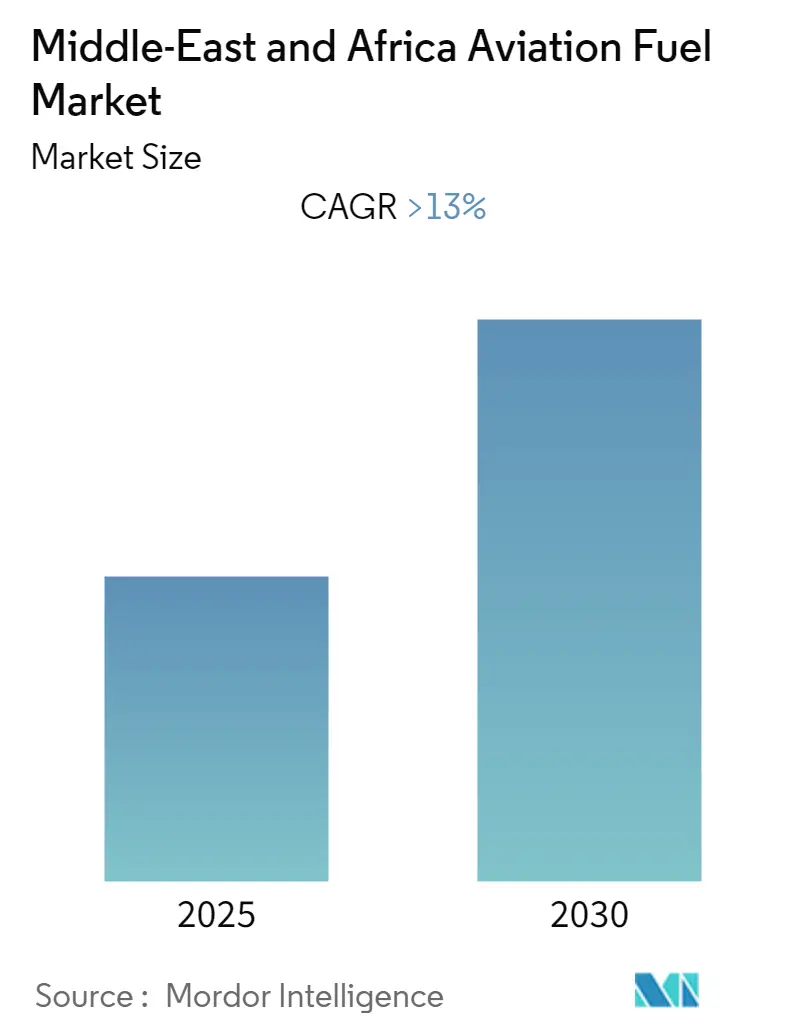
| Study Period | 2019 - 2030 |
| Base Year For Estimation | 2024 |
| Forecast Data Period | 2025 - 2030 |
| Historical Data Period | 2019 - 2023 |
| CAGR | 13.00 % |
| Market Concentration | Low |
Major Players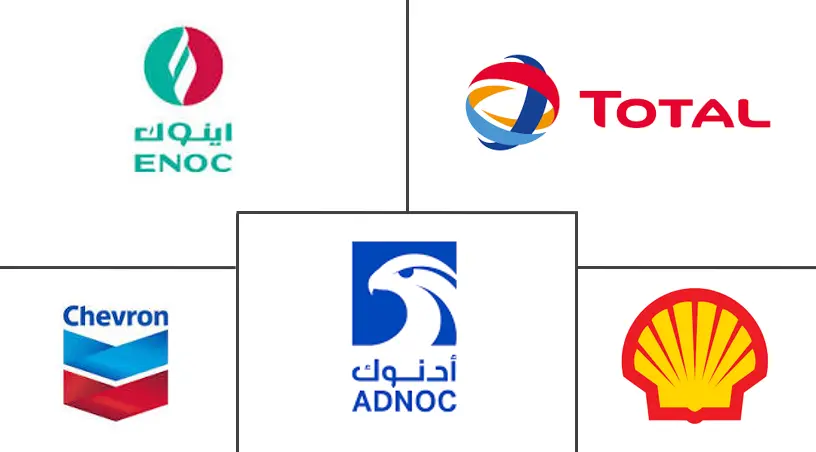
*Disclaimer: Major Players sorted in no particular order |
MEA Aviation Fuel Market Analysis
The Middle-East and Africa Aviation Fuel Market is expected to register a CAGR of greater than 13% during the forecast period.
The market was negatively impacted by the outbreak of COVID-19 due to regional lockdowns and flight restrictions. Currently, the market has reached pre-pandemic levels.
- The increasing number of air passengers, on account of the cheaper airfare in recent times, stronger economic conditions, and increasing disposable income, are among the major driving factors for the market. Ongoing and upcoming fighter jet deals in different countries in the region are also expected to increase aviation fuel demand further.
- However, the high and volatile cost of aviation fuel is expected to restrain the market.
- Countries in the Middle-Eastern region need over 2,600 new aircraft in the next 20 years to cater to the increasing number of air travelers in the region. With this large-scale, opportunities are expected for the aviation fuel market players.
- With the largest market size in the Middle East and Africa, the United Arab Emirates is leading the market in the region and is likely to continue its dominance.
MEA Aviation Fuel Market Trends
Commercial Sector to Dominate the Market
- Commercial aviation includes operating scheduled and non-scheduled aircraft, which involves commercial air transportation of passengers or cargo. The commercial segment is one of the largest consumers of aviation fuel, and it accounts for a quarter of the total operating expenditure for an airline operator.
- The Russia-Ukraine conflict has further aggravated the issue of high prices of oil, which had been maintained above their original prices due to supply cuts by OPEC+ nations. An increase in the prices of crude oil will adversely impact the requirement for aviation fuel in the commercial aviation sector, which is the major user of the commodity in the country.
- In 2021, Saudi Arabia signed a financing agreement worth USD 3 billion to partially finance requirements for aircraft it has ordered. The amount covers the airline's aircraft financing requirements until mid-2024, helping finance the purchases of 73 aircraft previously ordered, it said in a statement. The airline has ordered Airbus A320neo, A321neo, A321XLR, and Boeing 787-10 jets.
- The number of passengers that passed through Saudi Arabia's airports in 2022 was 8.7 million. Saudi government aims to reach 330 million passengers, 250 international destinations, and 100 million tourists annually by 2030.
- In January 2022, Qatar signed an order for 34 of the 777X, a giant, twin-engine plane powered by General Electric, as well as options for 16 more of the jets. The airline also ordered two of Boeing's current 777 freighter models. Boeing expects the passenger 777X to enter into service in late 2023, about three years behind schedule.
- In 2021, South Africa witnessed the highest air traffic in Africa, with the total air passenger traveled being approximately 21 million.
- Due to the aforementioned factors, the commercial sector is expected to dominate the market during the forecast period.
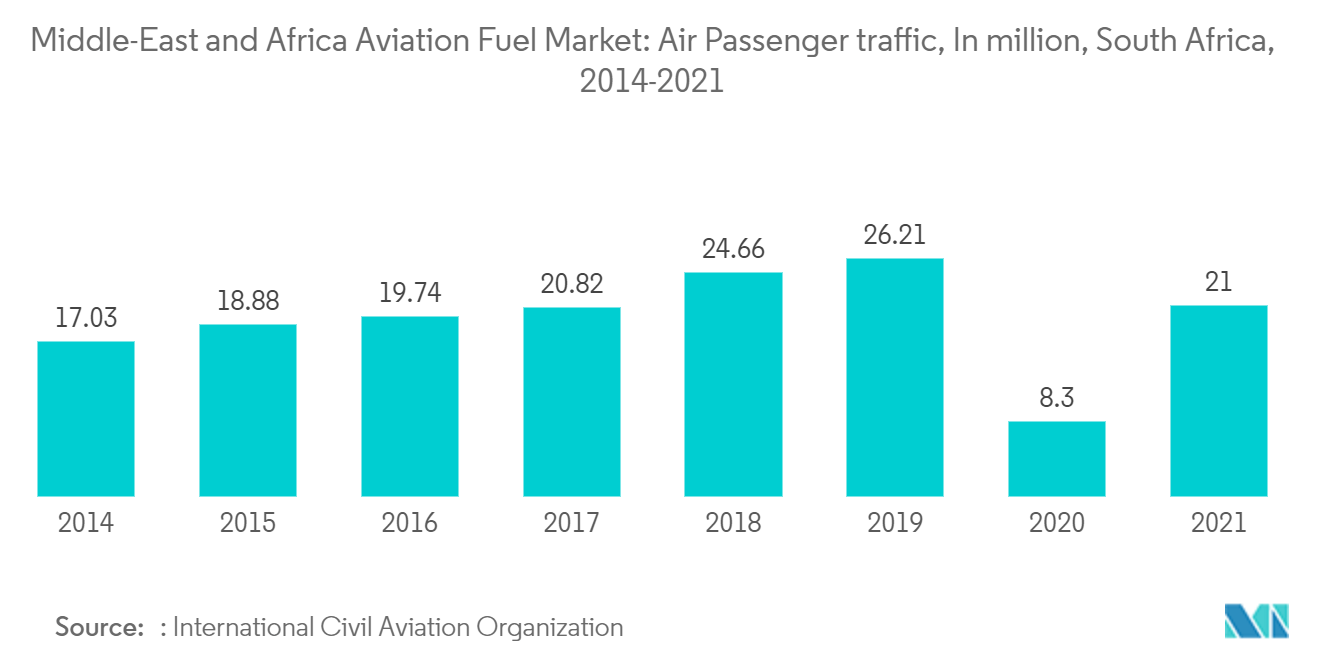
The United Arab Emirates to Dominate the Market
- The UAE's national carriers fly to 108 countries and 224 cities around the world, and the value of the UAE's investments in the aviation sector amounted to USD 270 billion as of October 2021 (ICAO).
- The United Arab Emirates is one of the major countries in the aviation fuel sector in the Middle East due to significant air traffic, large production of crude oil, significant refining capacity, availability of large domestic aviation fuel supply, and its two major airlines, the Emirates and Etihad.
- Abu Dhabi airports served 2,563,297 passengers during the first three months of 2022, an increase of 218% from the same period in 2021. The airports logged 22,689 flights in the quarter, an increase of 38% from 2021.
- Moreover, once the Al Maktoum International Airport in Dubai is completed, it is expected to emerge as the largest airport in the world, with a capacity of up to 160 million passengers and 12 million metric tons of air freight volume annually.
- A total of 883,000 flights were handled by Emirati airports, with Dubai Airport ranking sixth globally in terms of shipment, transporting 68.65 million kg of goods (Dubai Airport Factsheet). The United Arab Emirates has one of the largest fleets of Boeing aircraft in the world, with 191 aircraft, and it also has 119 Airbus 380 aircraft. Its four national carriers have approximately 498 aircraft.
- Due to the aforementioned factors, the United Arab Emirates is expected to dominate the market during the forecast period.
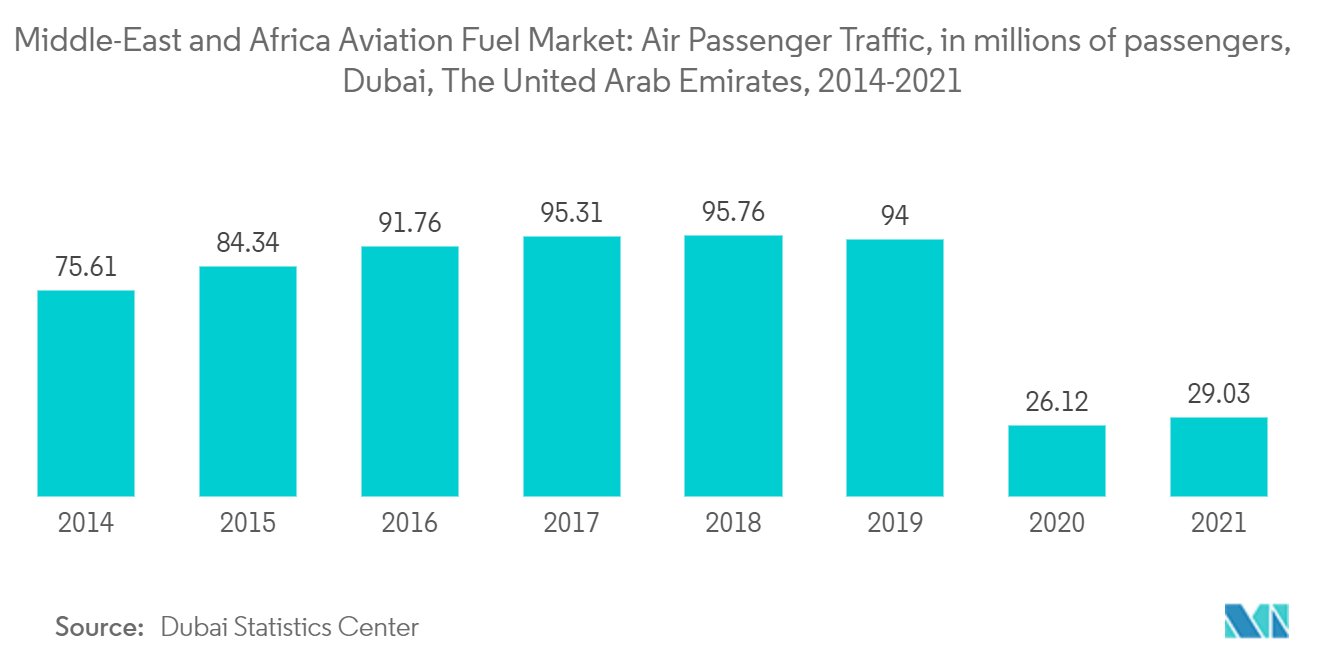
MEA Aviation Fuel Industry Overview
The Middle East and African aviation fuel market are moderately consolidated. Some of the major companies (in no particular order) include Emirates National Oil Company, Chevron Corporation, Shell PLC, TotalEnergies SE, Abu Dhabi National Oil Company, and others.
MEA Aviation Fuel Market Leaders
-
Emirates National Oil Company
-
Chevron Corporation
-
Abu Dhabi National Oil Company
-
Royal Dutch Shell PLC
-
Shell Plc
-
TotalEnergies SE
- *Disclaimer: Major Players sorted in no particular order
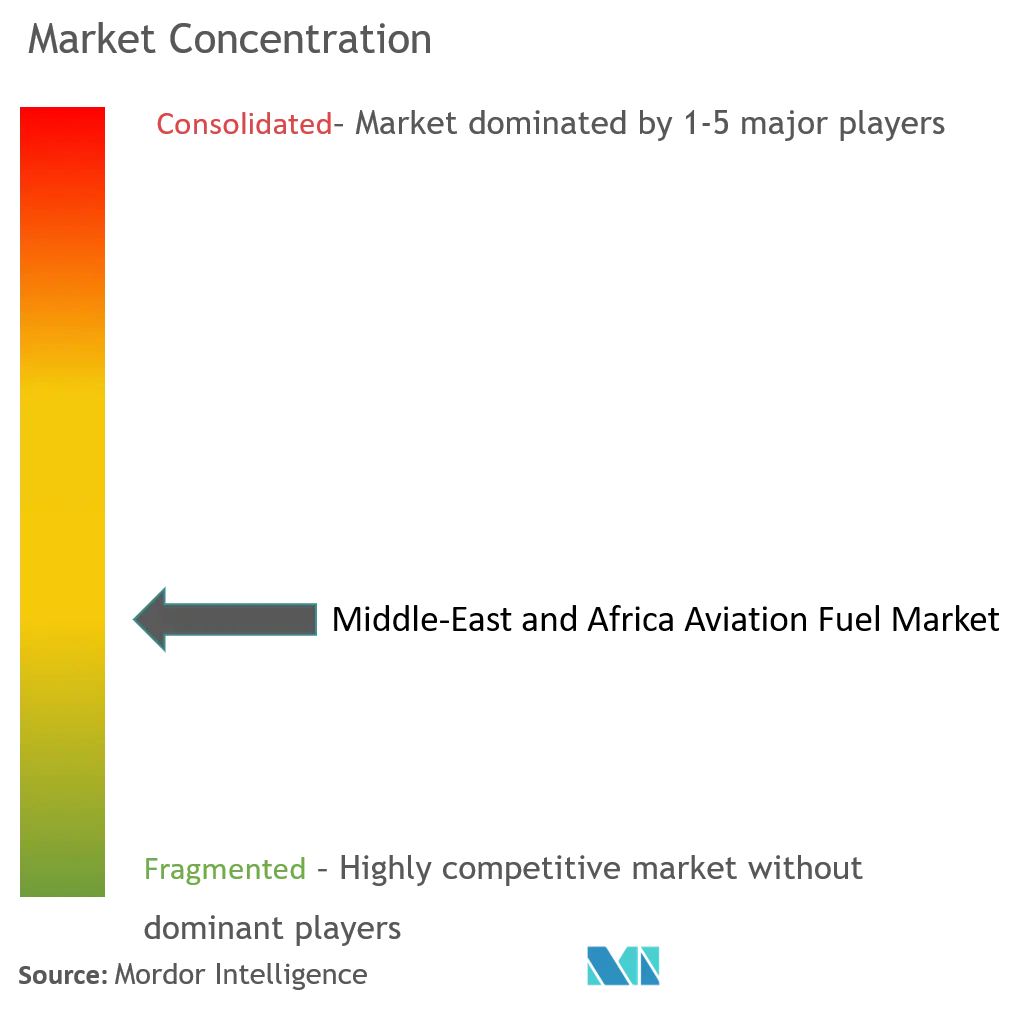
MEA Aviation Fuel Market News
- January 2022: Masdar, Siemens Energy, and TotalEnergies signed a partnership agreement focused on green hydrogen to produce sustainable aviation fuel (SAF).
- January 2023: AviLease and the Saudi Investment Recycling Company (SIRC) signed a Memorandum of Understanding (MoU) to launch the production and distribution of sustainable aviation fuel (SAF) to AviLease's network.
MEA Aviation Fuel Industry Segmentation
Aviation fuels are petroleum-based fuels or mixtures of petroleum and synthetic fuels that are used to power airplanes. They are subject to stricter regulations than fuels used for stationary purposes, such as heating and driving. They contain additives to improve or preserve characteristics vital to fuel management or performance.
In the Middle East and Africa, the aviation fuel market is segmented by fuel type, application, and geography. By fuel type, the market is segmented into air turbine fuel, aviation biofuel, and AVGAS. By application, the market is segmented into commercial, defense, and general aviation. The report also covers the market size and forecasts for the Aviation fuels market across the major countries in the region. For each segment, the market sizing and forecasts have been done based on revenue (USD billion).
| Fuel Type | Air Turbine Fuel (ATF) |
| Aviation Biofuel | |
| AVGAS | |
| Application | Commercial |
| Defense | |
| General Aviation | |
| Geography | United Arab Emirates |
| Saudi Arabia | |
| Qatar | |
| Egypt | |
| South Africa | |
| Rest of Middle-East and Africa |
MEA Aviation Fuel Market Research FAQs
What is the current Middle-East and Africa Aviation Fuel Market size?
The Middle-East and Africa Aviation Fuel Market is projected to register a CAGR of greater than 13% during the forecast period (2025-2030)
Who are the key players in Middle-East and Africa Aviation Fuel Market?
Emirates National Oil Company, Chevron Corporation, Abu Dhabi National Oil Company, Royal Dutch Shell PLC, Shell Plc and TotalEnergies SE are the major companies operating in the Middle-East and Africa Aviation Fuel Market.
What years does this Middle-East and Africa Aviation Fuel Market cover?
The report covers the Middle-East and Africa Aviation Fuel Market historical market size for years: 2019, 2020, 2021, 2022, 2023 and 2024. The report also forecasts the Middle-East and Africa Aviation Fuel Market size for years: 2025, 2026, 2027, 2028, 2029 and 2030.
Our Best Selling Reports
Aviation Fuel in MEA Industry Report
Statistics for the 2025 Middle-East and Africa Aviation Fuel market share, size and revenue growth rate, created by Mordor Intelligence™ Industry Reports. Middle-East and Africa Aviation Fuel analysis includes a market forecast outlook for 2025 to 2030 and historical overview. Get a sample of this industry analysis as a free report PDF download.




